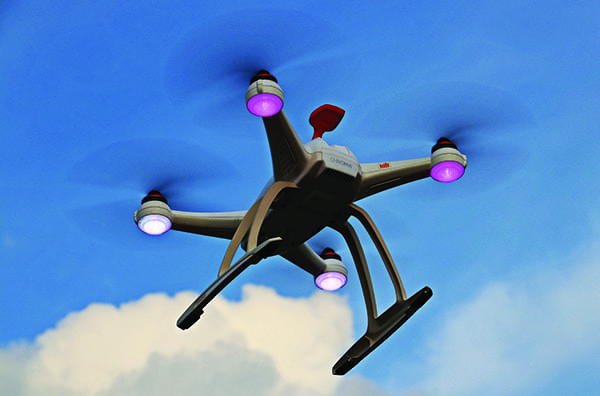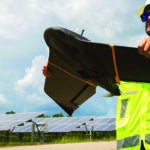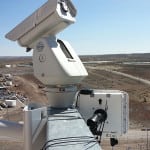Drones represent a classic good news/bad news scenario. The good news is great. The bad news is terrifying.
On the good news front, drones can keep utility-sector workers safely on the ground, with the machines performing aerial inspections at a fraction of what it would cost to do with manned aircraft. They provide faster, easier inspection of boilers, stacks, towers, and other infrastructure.
 |
|
1. Drones—unmanned aerial vehicles—are often used to conduct inspections and collect data from power generation sites, and transmission and distribution assets. But they also can pose a security risk with their ability to intrude upon areas humans are not able to access. Courtesy: S. Hermann and F. Richter / Pixabay |
The bad news? Drones (Figure 1) represent an enormous threat across the energy sector—from production to distribution.
The U.S. Department of Homeland Security notes: “There are 16 critical infrastructure sectors whose assets, systems, and networks, whether physical or virtual, are considered so vital to the United States that their incapacitation or destruction would have a debilitating effect on security, national economic security, national public health or safety, or any combination thereof.”
Of course, Homeland Security included energy as one of those critical sectors. Drones can be used to attack critical infrastructure in a number of ways, including:
■ Carrying explosive payloads.
■ Carrying chemical payloads.
■ Conducting mapping and surveillance.
■ Breaching computer systems and conducting cyberattacks by landing on buildings and tapping into local networks.
■ Intellectual property theft via drone-based hacking.
‘Inexpensive Cruise Missiles’
As drones get bigger, so do their potential payloads. An example is the recently introduced Kalishnikov KUB-UAV. The same company that became a household name with its military rifles is now offering a drone that is four feet wide, can fly for 30 minutes at a speed of 80 mph, and carries six pounds of explosives. That makes it roughly the size of a coffee table that can be guided to explode on a target 40 miles away—the equivalent of a “small, slow and presumably inexpensive cruise missile,” according to a report by the National Interest website.
Putting the threat of the Kalishnikov into chilling perspective, an article in The Washington Post quotes Nicholas Grossman, a professor of international relations at the University of Illinois and author of the book Drones and Terrorism: Asymmetric Warfare and the Threat to Global Security, as saying, “Whoever buys one will have the ability to steer a bomb with a high degree of accuracy unparalleled except by some of the U.S. military’s smartest bombs.”
The Need to Detect
An essential first line of defense is to gain situational awareness of the airspace above and surrounding power plants and other critical energy sector infrastructure (see sidebar). A number of technologies are being pressed into service to aid drone detection, including high-definition and infrared cameras, radio frequency (RF) detection, acoustic sensors, and other elements. All can play a role, but the foundational element of detection remains radar—especially high-precision radar.
Radar should serve as the foundation of an airspace situational awareness deployment because it provides the longest reach and captures essential data points for object detection and tracking. Radar benefits include:
■ Measures location directly, whether an object is traveling along the ground or through the air.
■ Measures velocity of the object.
■ Provides long range.
■ Provides a wide field of view.
■ Insensitive to weather or lighting variability.
With radar providing early detection, additional elements, such as cameras for device identification or RF detection for determining origin of control, can be incorporated into hybrid solutions.
|
Best Practices for Physical Security Providing adequate security for facility occupants and visitors is a top priority for every property owner. While determining how to protect a facility and its assets can be a challenge, having the proper guidance from trusted partners can help. By implementing physical security best practices, facility owners can ensure they are in a better position to protect their infrastructure assets and building occupants. Every facility, regardless of size and location, needs to protect against threats, intruders, and natural disasters. The most viable security measures include the intelligent use of physical security systems and technology. If they haven’t already, facility managers should consider adding video surveillance, access control, and sensors as these are cornerstone solutions, and when paired together, provide even greater benefits. Video surveillance is a traditional security method that plays a critical role in facility safety and can be easily integrated and updated to increase its effectiveness. Video systems can help monitor daily activity, record incidents, and flag suspicious behavior. When paired with access control to manage who enters and exits a building, the two systems can provide a record of who is trying to enter a facility and can work together to deny entry or initiate a lockdown, if necessary. Adding sensors, including ones that detect motion, heat, and smoke, to video surveillance and access control systems can take security practices one step further. These systems can work together to detect threats, such as a gunshot or fire, and can quickly alert emergency responders and put lockdown procedures in place. This ability to communicate real-time information in times of emergencies helps minimize disruption and provides better protection for people and assets. In addition to implementing the technologies above, a less obvious but still important consideration is taking steps to ensure adequate lighting. Not only does lighting enhance natural surveillance and help people see their surroundings more clearly, when lighting is integrated with cameras and sensors it can help gather and share important information in times of emergency. For example, if a gunshot is detected, sensors and lighting solutions can be alerted to help illuminate the best route to guide occupants to safety. Organizations need to prioritize business continuity to meet their goals, and an important part of that is ensuring the safety and security of their occupants and assets. An effective security plan incorporates physical security systems to detect suspicious activity and unusual changes in the environment. Integration of these systems can ensure a security strategy provides 24/7 protection needed to safeguard a facility. To ensure a facility is fully protected, consider working with an expert integrator who can help develop a strategy, accounting for changing conditions and new technologies, and stay on top of maintenance. —Hank Monaco is vice president of marketing with Johnson Controls. |
High-Precision Radar Required
Available options for commercial high-performance airspace sensors to integrate into existing ground perimeter security systems for detecting, tracking, and classifying one or more intruders are few, and most are ill-suited to counter-drone surveillance. Radars typically found in areas of military and national security are, for the most part, capable of the counter-drone mission, but at extraordinary expense in acquisition, operations, and maintenance.
The maneuverability of drones can be difficult to track with mechanical rotating radar, such as found at airports. Their signal update rates are once per revolution, which can vary from one to three seconds or more. While this update rate works fine for large aircraft, which identify themselves, fly predictably, and communicate with humans monitoring the air traffic control system, the latency can turn the drone flight path into a blur of points that often appear unrelated.
Drones are orders of magnitude smaller than the aircraft envisioned by airport or defense radar designers and able to autonomously alter flight vectors to confuse and deter tracking, yet sourcing advanced components or sophisticated systems is simple and affordable. A more commercially priced radar is required for industry-at-large to upgrade perimeter security systems from current 2-dimensional, with no elevation, to 3-dimensional surveillance systems.
The energy sector will continue to benefit from all the good that drones can provide, as what better way to inspect acres of solar panels or rough terrain power lines, boilers, and a whole realm of other energy infrastructure.
As we enjoy the good drones can bring, the power industry must also protect itself from the bad. High-precision radar should be at the foundation of all such efforts. ■
—Jeff Finan is vice president of business development for Echodyne, a radar technology company that specializes in safety and security solutions.










